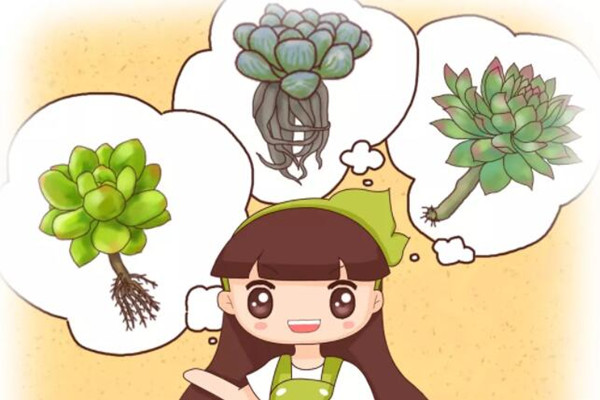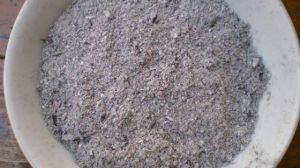Rotten root succulent man orchid, casually threw into the water, unexpectedly grew crazy!

The rotten succulent root is thrown into the water, and the whisker root is longer than the finger!
Presumably after a summer, everyone's succulent death, rotting roots. However, as long as the succulent plant is not dead, throwing it into the water can save a life!
1. Remove the succulent rotten roots from the basin, clean up the soil on the roots, and remove the leaves that have been blackened by water at the bottom.
2. Cut off the succulent rotten roots with a pair of sterilized scissors so that you can cut a little more to avoid residual germs.
3. If the succulent rotten root is more serious, cut off all the rotten root directly with a knife from the bottom.
4. After pruning, apply some carbendazim powder to the succulent cut, then put it in a bright and ventilated place to dry.
5. Prepare a disposable paper cup, cut it at the waist, draw a "ten" on the base and buckle it down with your hands.
6. Put the dried succulent plant on the base of the paper cup, put a disposable paper cup on the outside of the base, and add water to the outer paper cup until there is no too much succulent root. If it is rootless, let the water level be about 0.5cm at the bottom of the succulent plant.
7. In less than 10 days, succulent plants will produce long fibrous roots. when there are enough fibrous roots, you can choose to turn succulent succulent into soil culture.
The rotten root of the gentleman orchid is thrown into the water, and the white root is thicker than the ham sausage!
Many flower friends of the gentleman orchid finally survived the hot and humid summer, but did not expect that just a few days into autumn, the roots rotted. Don't worry, learn this trick well, your gentleman orchid can still be saved!
1, take off the rotten root of the gentleman orchid, do not pull hard when taking off the basin, although the gentleman orchid has rotten roots, it may still have some healthy roots.
2. Rinse the soil on the root system with water and cut off all the rotten roots and useless empty roots.
3. In order to avoid residual bacteria, put the orchid in potassium permanganate solution for about 15 minutes before hydroponic culture.
4. Prepare a special hydroponic container for Cymbidium, pass the root through the planting basket, fix it with coarse ceramsite, then pour water, and the water level is lower than that of the root system of Cymbidium.
5. Put the magnolia hydroponic bottle in a brightly lit place for maintenance, and add some water after the water level drops.
6. In about two weeks, the magnolia will grow new white roots. If you want the orchid to grow stronger, wait for the growth of 3-5 white roots, turn to soil culture and conservation.
7. In order to avoid the rotten roots of the orchid again, before putting on the basin, pad some broken pine towers at the bottom of the basin to increase air permeability and water permeability.
8. After putting the orchid into the basin, put it in a place with bright light and good ventilation. In order to make the orchid adapt to the soil environment more quickly, it is necessary to keep the soil in a slightly moist state in the early stage.
- Prev

How to grow flowers with plant ash
Promote germination: cover 1-2 cm with plant ash when sowing, which can germinate 7-10 days ahead of time. Speed up rooting: when transplanting, plant ash is fully mixed with organic fertilizer as base fertilizer, or 5-20% plant ash is mixed into the soil. Prevent defoliation: spray 8-15% plant ash extract in the growing season as extra-root topdressing.
- Next

Flower cultivation of 12 common diseases, a move to save, do not quickly collect!
Recently, many flower friends have left messages to Huahua saying that there are all kinds of problems with their flowers and plants. Huahua summed up to see if there are any problems in your family.
Related
- What if the leaves of potted flowers turn yellow?
- Florescence Control of several Flowers
- Anti-freezing technology and post-freezing nursing technology of flowers
- What is the classification of flowers? What are the common methods of flower classification?
- Prevention and control of alkali and acid damage of flowers in courtyard
- Technology of Anti-freezing and restoring growth of Flower seedlings in greenhouse and greenhouse
- How does flower fertilization not hurt the root? Fertilization technology of flowers
- Key points of disinfection in flower greenhouse
- Several pesticides that are banned or used cautiously in flowers
- How to fertilize the flowers that watch the leaves?

